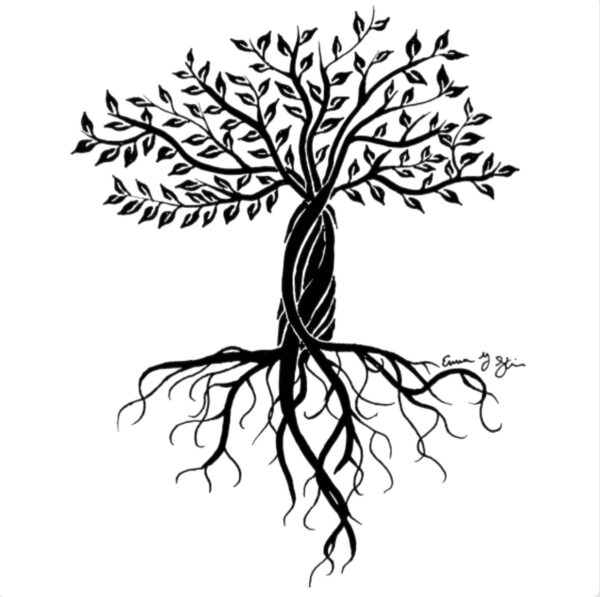Journey

The holiday season helps us reminisce and reflect. Traditionally, it is about migrating and moving into a new year; about evaluating and setting resolutions for change. Thoughts and questions under consideration may include acceptance of something, processing an emotion, adjusting to a change, or finding a connection. Embarking on life’s journeys, whether in the past, present, or the future, can indeed be intimidating and frightening. Navigating the task takes courage.
If you are grieving a loss during this time of year, please know that you are not alone and the words within this blog may be helpful. No one knows what the future holds for anyone, and it does entail a bit of faith and hope to steer the uncertainty of it all. Loss is a natural part of life, and embracing the ambiguity allows you to grow and adapt to unforeseen circumstances. As an example, I could not have predicted the uncertainty of losing my mom at age 22, but yet, I had to find a way to navigate the journey of the loss, not just from her, but from my father, which I grieved both years later.
When you hear about delayed grief, believe it; it is true. I had the ability to compartmentalize the loss until years later. I thought I was navigating the journey of the loss of my mom by ignoring what happened. I returned to my home in Arizona and went about living my life. I said to myself, “Toughen up and move on.” It worked…until my father died 20 years later. The loss resurfaced and the journey was painful.
The journey of nature is like the journey of loss – the cycle of life and death. It is as intricate and fascinating as a tapestry. It weaves its beauty over time, if you allow it. After acceptance and the processing of the pain, the adjustment of the loss, for me, became a rhythmic dance of seasonal changes. From the blooming of the flowers in the spring to the shedding of the leaves in autumn, the cycles of grief contributed to the creation of a dynamic beauty, similar to the natural world. The secret of my journey? I kept moving and evolving. As painful as it was, I let the water flow.
With my grief, like nature, I was in a constant state of adaptation and evolution. Over time, the pain developed characteristics and behaviors that helped me to survive and thrive in my environment. The ongoing process shaped who I became; all while I was finding an enduring connection with my parents, I embarked on a new life.
Were there disruptions along the way and apparent chaos? Absolutely. Just as there are natural disruptions in nature, we have to embrace the changing climate, and, in some cases, depend on the role that the instabilities play in our healing. We begin to learn of the interconnection of our journey and how important the intricate webs of relationships are and the parts they play in maintaining the balance of the diverse landscape it begins to create.
Death is a natural part of our journey, just as it is in nature. It is an integral part that enriches the soul and supports new life. One of William Worden’s phases of grief is “to find an enduring connection with the deceased in the midst of embarking on a new life.” Conserving and preserving the connection, as hard as that is, can help to deepen our understanding of the loss and inspire a sense of awe and responsibility for the diversity that is ahead of us.

Our focus for the month of December is Journey, and the plant/flower is the Tree of Life. The Tree of Life has been used across cultures and religions to symbolize various aspects of existence, growth, and interconnectedness. When viewed as a representation of one’s personal journey, the Tree of Life can carry profound meaning in the journey of loss. Consider the symbolism below to help with the acceptance, adjustment, the process of pain, and the enduring connection with the deceased while embarking on your new identity. I was no longer a daughter, but the journey taught me that it is okay.
- The roots of a tree symbolize your foundation, roots, and origin. Reflecting on your past, heritage, and experiences provides a strong base for growth.
- The trunk of the tree represents your strength and resilience. Just as a tree withstands the forces of nature, you too can endure challenges and setbacks, growing stronger in the process.
- The branches represent the different paths and choices in your life. Each decision you make leads to a new branch, shaping your journey in unique ways.
- The leaves symbolize personal growth and transformation. Just as leaves change with the seasons, you undergo continuous growth and adaptation to the changing circumstances in your life.
- The fruits of the tree symbolize your achievements and contributions. These could be the positive outcomes and impacts resulting from your efforts and actions.
- The branches, leaves, and roots illustrate the interconnectedness of your life. Relationships, experiences, and choices are intertwined, creating a holistic and meaningful journey.
- The cycle of seasons in a tree’s life mirrors the different phases you go through—spring for new beginnings, summer for growth, fall for reflection, and winter for rest and rejuvenation.
- Trees adapt to changing conditions, bending with the wind. Similarly, your ability to adapt and be flexible in the face of change contributes to your personal growth.
- Like a tree needs care and nourishment, your journey requires self-care and reflection. Taking the time to nurture your mind, body, and spirit ensures a healthier and more fulfilling life.
- The shade of a tree represents your capacity to provide support and shelter for others. Your journey involves not only personal growth but also contributing positively to the well-being of those around you.
- Trees experience cycles of renewal through the shedding of old leaves and the growth of new ones. Similarly, your journey involves continuous learning and renewal, letting go of what no longer serves you and embracing new opportunities.
- The unity of roots, trunk, branches, and leaves signifies the connection between your mind and heart. Integrating your thoughts and emotions leads to a more balanced and harmonious journey.
By visualizing your grief as a Tree of Life, you can gain a deeper understanding of your experiences, challenges, and growth. It serves as a powerful symbol to connect with the natural processes of life and find meaning in the journey.
No one wants to face loss, but death is an integral part of our journey. When this occurs, the plan for our journey may need to be adjusted – stay flexible and open to new possibilities. And remember, bravery doesn’t mean the absence of fear; it means facing your fears and moving forward despite them. Each step you take, no matter how small, is a victory in itself.
At Hope Grows, we support those grieving a loss. If you are struggling, reach out to connect. Call us at 412.369.4673 or email [email protected]. Consider joining one of our classes in “The Joyful Grief & Loss Series.” Our first gathering, “Grief & The Box,” will be Saturday, January 20 – click here to learn more and to register.
Written by Lisa Story, MSCP, LPC, CT
Hope Grows Founder & Clinical Director

